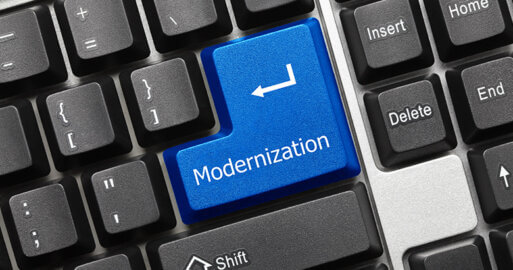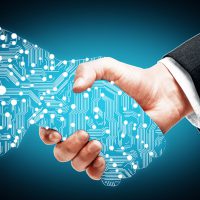Legacy Modernization-Embrace the Digital Transformation
 Legacy modernization is a constant attempt for companies to improve their services and to provide the quickest access to information. Organizations are challenged to cope with new applications and to constantly adapt their legacy software to keep up with the latest trends on the business field. The purpose is to improve customer service and compete with the same enterprises.
Legacy modernization is a constant attempt for companies to improve their services and to provide the quickest access to information. Organizations are challenged to cope with new applications and to constantly adapt their legacy software to keep up with the latest trends on the business field. The purpose is to improve customer service and compete with the same enterprises.
Software, web applications, and enterprise systems are faster, leaner, and easier to use than ever before. They can crunch more data, can be backed up on the fly, are more secure, and be housed in the cloud. An organization can easily fall behind a competitor using a newer system that allows them to run faster and more efficiently.
Today’s enterprises and organizations face a widening divergence between the IT infrastructure demanded by emerging business needs and the infrastructure they’ve built up over generations.
The smart enterprise meets these challenges by replacing MFT/B2B legacy systems with digitally enabled, modernized, secure, trustworthy and scalable business integration applications.
When is the best time to start planning for upgrades? Why go through the upgrade process when your old software is still working? The below reasons will help clarify why modernizing your software is a solid business decision.
- Many legacy systems are band-aided together and guarantee business silos: Organizations reap the biggest returns when they are able to reuse data and avoid redoing or completely recreating work that’s already been done. Without adequate interfaces linking systems and applications, both internally and externally, reusability is greatly limited, if possible at all.
- Maintenance and staffing costs can be higher: It’s not just overtime costs that drive up the expense of maintaining legacy applications—it’s also finding, attracting and paying the staff that cares for them. Even maintaining the original code or customized script can be a major cost, as the original programmers have long since left the organization and finding others with the right skill sets can be difficult.
- Compliance and regulatory concerns abound: Built before a time enamored with lawsuits and corporate oversight, legacy applications were not designed to live up to today’s stringent compliance standards like PCI, PSD2, AML, GDPR and MiFID II.
- Limited functionality limits innovation and growth: Today’s society demands instant and easy access to as much information as possible. In order to effectively compete, business requires accurate information in real-time and immediate availability from multiple sources. Most legacy applications simply cannot meet such high expectations, resulting in a poor impact on both employees and customers.
Of course, legacy application modernization doesn’t just happen. The best results occur when companies embrace a holistic approach that’s future-oriented and considers enterprise goals. SEEBURGER can be your partner in the journey to digital transformation, learn more:
Thank you for your message
We appreciate your interest in SEEBURGER
Get in contact with us:
Please enter details about your project in the message section so we can direct your inquiry to the right consultant.
Written by: Ulf Persson
As SVP Strategic Product Management and Analyst Relations, Ulf is responsible for strategic product management, product marketing, global analyst relations and leadership with regards to SEEBURGER integration technology, platform and integration services. This also includes strategic sales and marketing initiatives. Ulf works across multiple industry verticals such as Financial Services/Payments, Automotive, Logistics, Utilities, Retail, CPG and Manufacturing. Ulf has more than 30 years of global business and technology experience working with product and solution delivery of integration technologies (EAI, EDI, B2B, MFT, API, etc.), Analytics and Big Data, Cloud Services, Digital Transformation and various industry initiatives. Before joining SEEBURGER in October 2016, Ulf worked in various global leadership roles with international business integration technology and cloud services providers.





